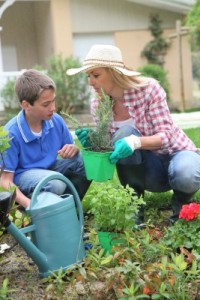 Even if you can’t leave town this year for Spring Break, you can plan some special family activities while your kids are out of school. Here are a couple of fun ideas.
Even if you can’t leave town this year for Spring Break, you can plan some special family activities while your kids are out of school. Here are a couple of fun ideas.
Start a garden: Whether you begin with a few herbs in pots or decide to rent a rototiller, a garden is a great way of getting involved in something different. You might want each child to choose a vegetable to grow or give everyone a small area to plant whatever they want.
Begin by visiting a local nursery. Talk to the experts there to find out what options would be best for your available space and the season. You might want to mix some plants with a few packages of seeds to you have immediate crops and some that will come up later.
Look for heirloom varieties of vegetables, the ones that are hard to find in stores. Cherry tomato plants are also a good choice for the Arizona desert climate.
Let your children take the lead in planning and choosing. Get them directly involved in the planting and tending. If one child wants flowers rather than vegetables, that’s OK. It’s the process rather than the results that are important.
 Take a hike: No, this is not a rude remark. How about planning a nature walk either in the area or within a few hours’ drive? Once again, let your children take the lead. Pick up a book of interesting local hiking areas at your local bookstore or library.
Take a hike: No, this is not a rude remark. How about planning a nature walk either in the area or within a few hours’ drive? Once again, let your children take the lead. Pick up a book of interesting local hiking areas at your local bookstore or library.
Make the hike extra fun by including a picnic that everyone contributes to making and packing. Take along a book that helps you identify local plants and birds. Have someone wear a pedometer so you know how far you’ve gone at the end of the day.
Make this Spring Break special by finding an activity or event that everyone in your family can enjoy and working together to make it special for everyone.



